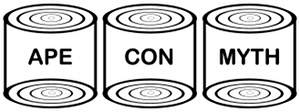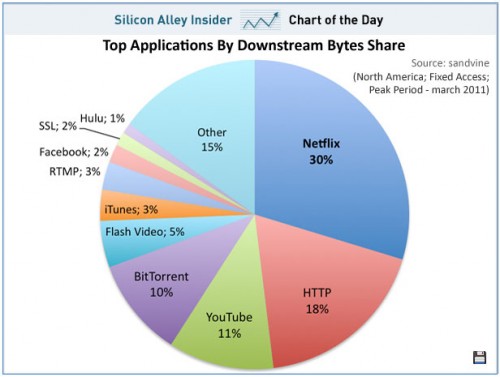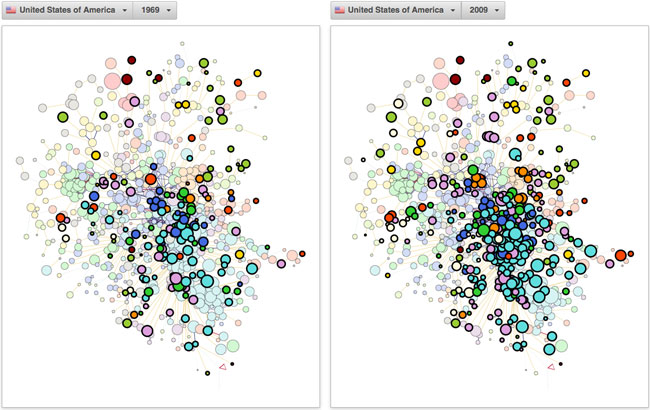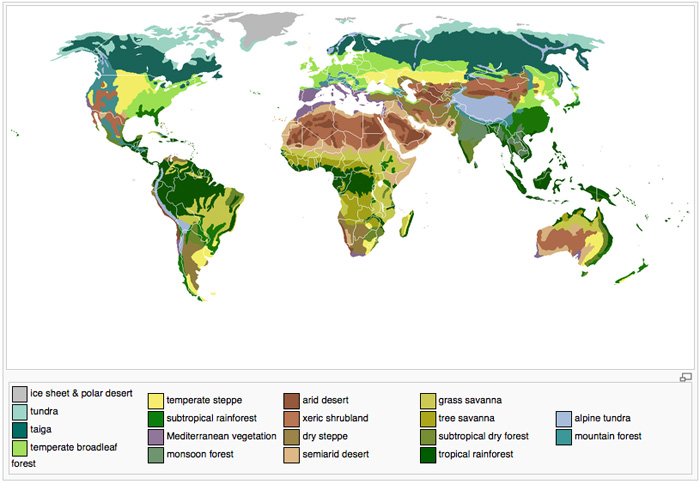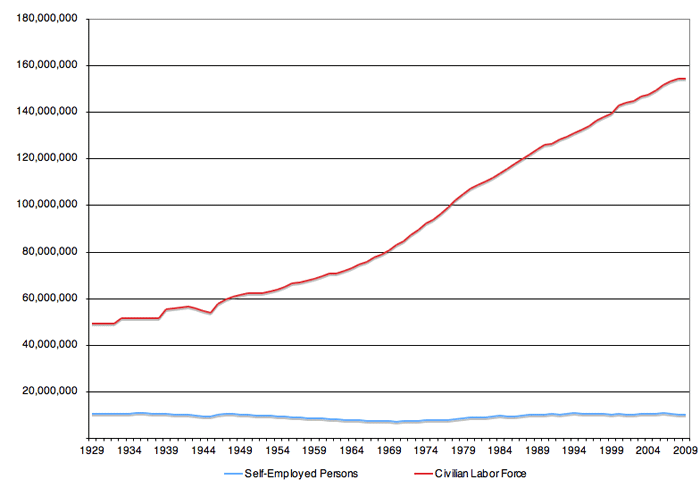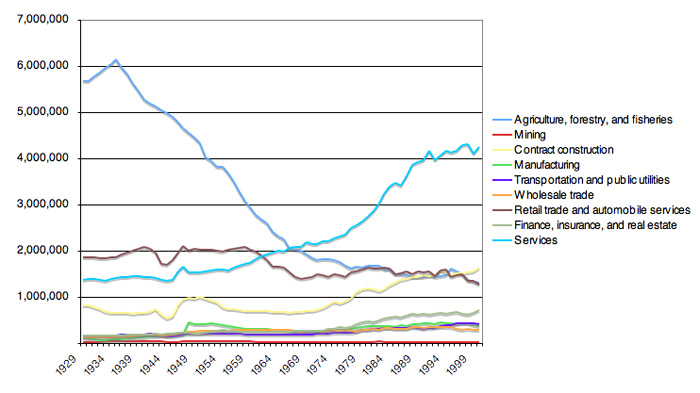Old timey video stores might be in decline, but like so many things in our lives, the change probably has more to do with convenience than quality. You might have to leave your house and walk or drive to get there, but at a video store, you generally get a full selection of both the new and old.
In contrast, consider the fate of a basic Netflix streaming-only subscriber, who is working with a selection on par with a poorly-funded library or a good yard sale. Even with Netflix mail service and iTunes to fall back on, the digital availability of new releases is as spotty as the new releases themselves.
Meanwhile, it was just announced that Netflix now accounts for 30% of downstream internet bandwidth…
That represents a lot of movie-viewing compromises. And you know, we are trying to maintain a culture here…
But why blame ourselves? The movie industry is the one failing to deliver their product. The infrastructure they need is staring them in the face. Imagine if they spent their time focused on doing their job instead of going after those who are doing it for them.
And as for all the lawsuits against the downloaders, the only defense they should need is, “I’m only trying to live like it is actually 2011 and would be more than happy to pay for the privilege. Your Honor, this is a complete waste of everyone’s time. We’d all be better off watching Starship Troopers 3 on Netflix.”
[Sandvine chart via Business Insider]
